How Oakley Reinvented The Surf Helmet
Pipeline, Teahupo’o, your own backyard — the WTR Icon is surfing’s new standard in head gear.
This piece is presented by Oakley, who happen to have made the most protective surf helmet on the market — empirically.
The best session of my life happened this year, just a day after the Olympics.
Four-to-five foot Teahupo’o, offshore winds, and thanks to the festivities the night prior (cheers, Kauli), there were never more than six people in the water.
I surfed for eight hours straight, made a sickening amount of barrels, and came back to shore overjoyed and unscathed. I only hit the bottom once, but my Florence impact suit absorbed most of the blow. My board also connected with my head at one point, but another piece of hot protective wear mitigated the damage — we’ll discuss this shortly.
Fast forward exactly one month, and I’m surfing a two-foot beachie in front of my house. The rail of my board cracked me in the head, leaving me with six stitches and 10 days out of the water. Even though I never would have been using it in those conditions, a helmet would have made this situation a complete non-issue.
Makes you think.
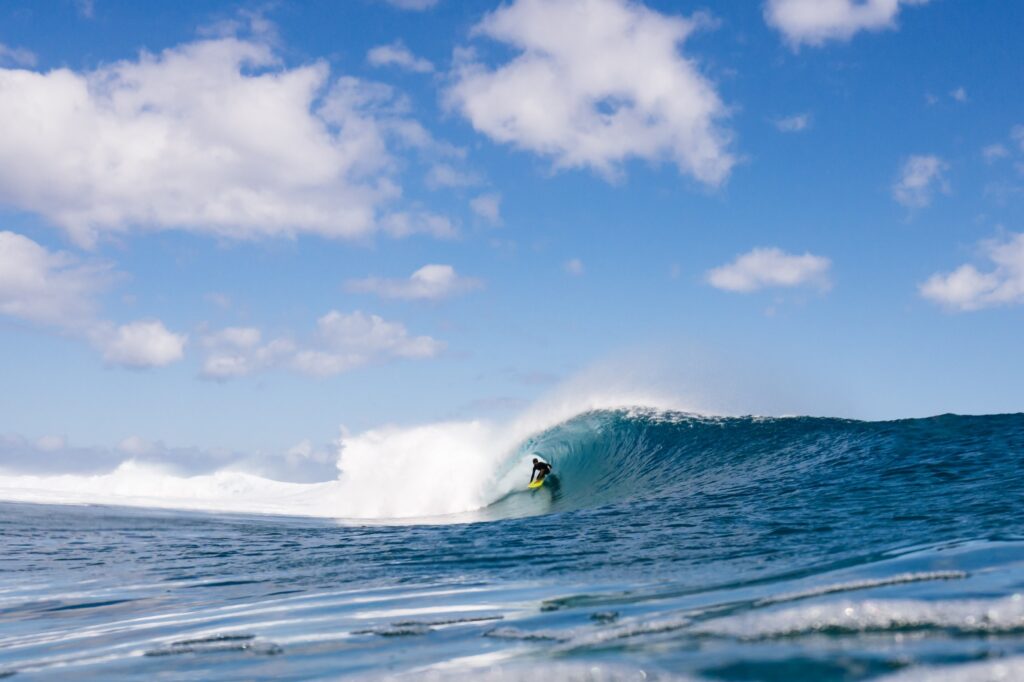
The stigma surrounding helmets and protective gear in surfing has persisted for decades, even in life-threatening conditions. However, with growing anecdotal and scientific evidence of injuries in seemingly harmless situations, helmets are becoming an essential part of surfing’s safety-first movement — alongside blow-up vests, impact suits, and to a lesser extent, hooded rashguards (UV kills more surfers than drowning, if we’re honest).
Recognizing this shift in the surfing space, Oakley has been quietly developing a helmet that could change perceptions of headgear in the sport. After years of research, development, and feedback from their top team riders, Oakley’s WTR Icon helmet will soon be available to everyday surfers.
The Icon’s initial appearance came when Caity Simmers wore one to victory at the 2024 Pipe Pro at sizable Backdoor. In an effort to capitalize on surfing’s most broadly viewed platform, Oakley hand-delivered these yet-unreleased helmets to every athlete competing in the 2024 Paris Olympics. After hitting her head on the reef in round one, Johanne Defay opted to wear an Icon for the entirety of her bronze-winning campaign — as did many other surfers in the Tahiti Games.

Oakley’s helmet program naturally expanded into surfing after decades of protecting heads in biking, skiing, and snowboarding.
A surfer himself, Bryan Norvell, a mechanical engineer at Oakley, explains that the team’s inspiration for the helmet came from a growing awareness of the dangers posed by waves of consequence.
“Around June of 2022, this project came up, and there had been a lot of talk about injuries at Pipeline, Teahupo’o, and even in wavepools. It also felt like there was a cultural shift similar to what happened in snowboarding or skiing 10 to 15 years ago. It was finally time for us to put our best foot forward and see if we could make something better and keep people safer.”
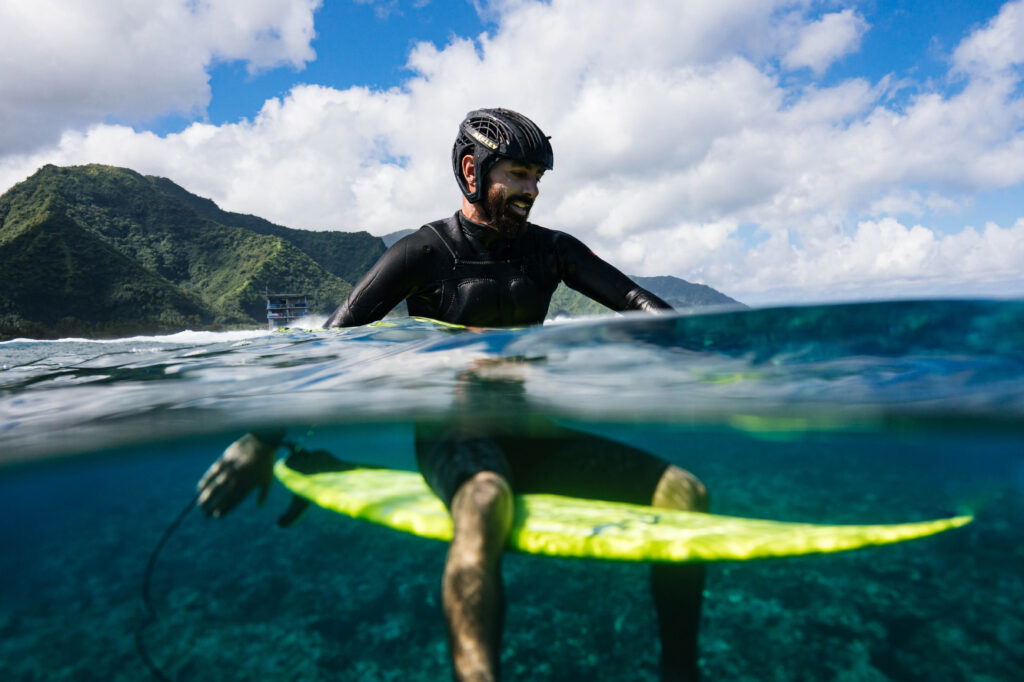
Oakley’s design team, described by Norvell as a collaborative group of 10 dedicated individuals, set out to create a helmet that would address challenges specific to surfing, such as unwanted buoyancy, sound and hearing issues, poor water drainage, and hydrodynamics.
“We purchased a bunch of the competition’s helmets and got in the water to better understand what the main issues were,” Norvell shares. Part of their research involved interviewing athletes to understand why they didn’t wear helmets more often, and primarily, what they didn’t like about them. The data pointed to buoyancy and “the parachute effect” as the main deterrents.
What they also discovered was that most of their competitors’ helmets weren’t EAN 1385 certified, a standard required for helmets sold to the public. To be certified, helmets must meet six major criteria: field of vision, extent of coverage, shock absorption, retention system performance, buoyancy, and durability.
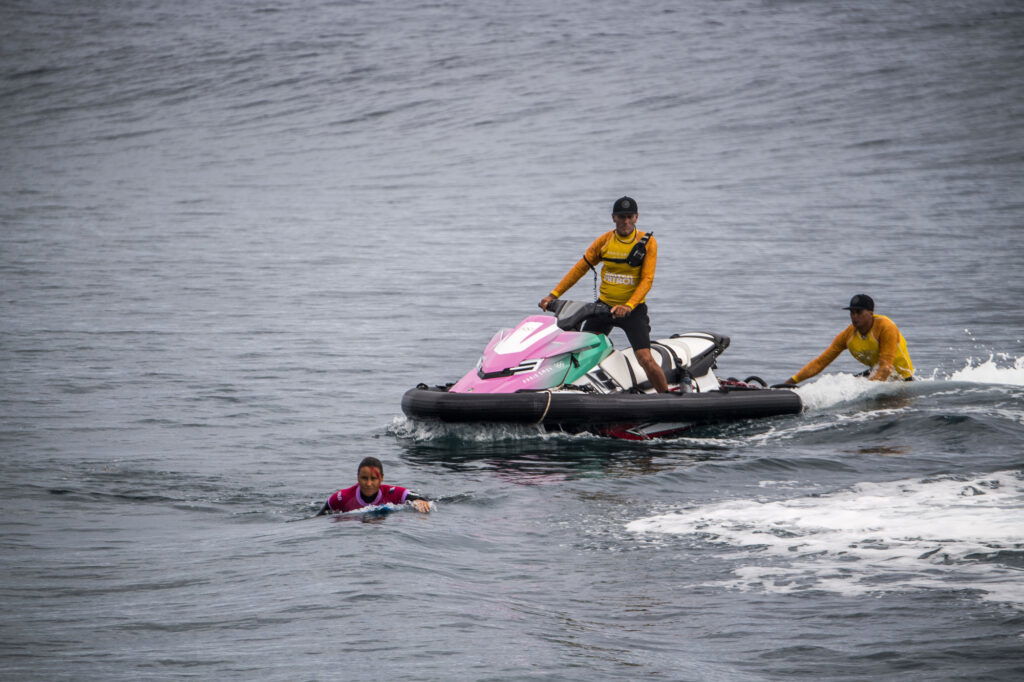
For Norvell, this was a surprising discovery. “Because the surf space is sort of undeveloped, they don’t really have to pass these standard tests,” he notes. However, the EAN 1385 certification technically falls under the “Helmets for canoeing and white-water sports” category — which is akin to big wave inflation vests earning certifications after having been tested in a lake.
Seeking deeper insights, Oakley turned to Virginia Tech, which developed a ranking system for helmets using a star-based approach rather than the traditional pass/fail test with limited parameters. The university instrumented helmets with accelerometers and collected data for several years from their football program. This data allows them to predict the likelihood of concussion for a given location and acceleration measurement.
By using Virginia Tech’s data, and adhering to their testing protocols, a wise and informed decision can be made when choosing the best surf helmet in the market. At the time, the best helmet on the market was rated only 1 out of 5 possible stars. “Our goal was to see how much we could improve on that,” Norvell said.
Unlike other surf helmets, which tend to have a dome-like structure, the WTR Icon features an “open concept” design. According to Norvell, this allows “for water and air to exchange instantaneously.” Surfers’ heads are constantly transitioning from water to air, which is what causes the dreaded “parachute” and buoyancy effects, as well as gurgling sounds when resurfacing.
“We performed an internal test with the goal of trying to get the helmet to drain water in less than a second, while also benchmarking our competitors to evaluate their drainage speeds.”
The test revealed that there’s a sweet spot when water drainage happens in under a second. “It’s instantaneous enough to where it’s not noticeable when you transition between the two elements.”
Additionally, the helmet has less surface area, meaning it can better penetrate water without the annoying push/pull effect during duck dives or wipeouts.

Their initial goal was undeniably achieved: the WTR Icon was rated a 4 out of 5 by VT. Norvell attributes their success to two key factors: the impact-absorbing material and the shell geometry. “I spent a lot of time working on that shell design to make it incredibly stiff. Your shell is your first layer of defense, and what it does is, when you have a pinpoint impact from the reef, it will disperse that load and turn it into a hundred tiny little loads that are displaced over a larger area, instead of sending it straight through your skull and damaging your brain.”
A common misconception about helmets is that they primarily exist to prevent lacerations resulting from encounters with reefs, hardware, and other hazards. However, with growing awareness of the causes and long-term effects of traumatic brain injuries, Oakley focused on creating a product that reduces risks from impact itself — such as violently colliding with water.
Borrowing from his past helmet design experience, Norvell asked, “How can we bring that technology over to the water space?”
“The shell itself will absorb impact from water,” Norvell explains, drawing a comparison to how water bubbles are used to reduce tension before a diver enters a pool. “The shell is actually doing that.”
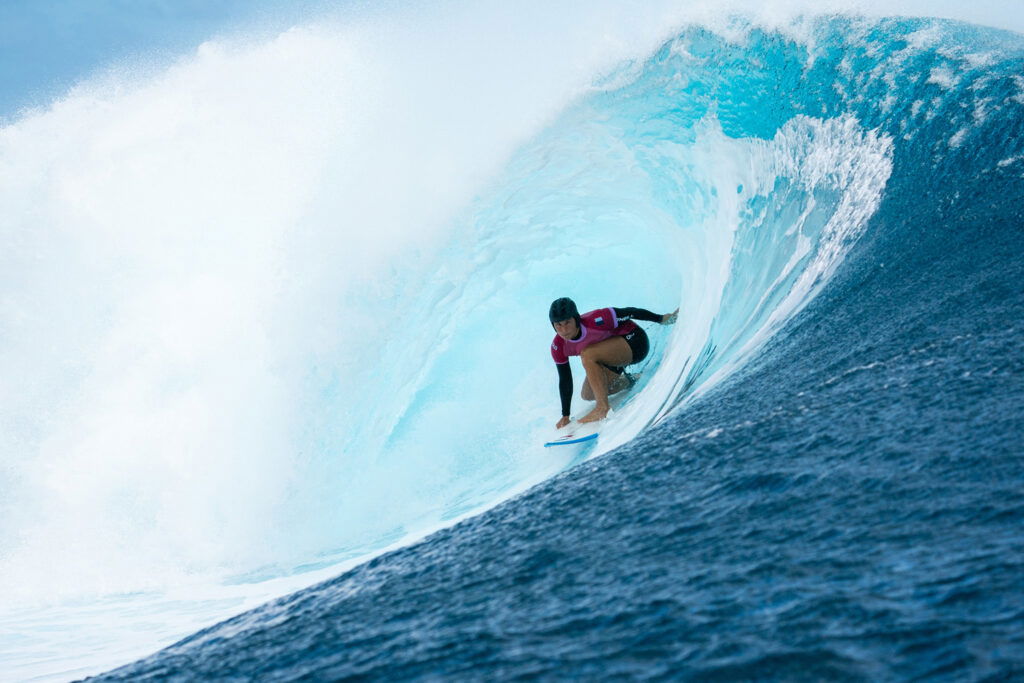
The Oakley team went through about 30 iterations of prototypes — “including some wild concepts that were not safe at all” — before arriving at the version seen on Caity Simmers’ head at Pipe. “In the cycling space, we cannot put a prototype helmet on a cyclist. The risk is too high, and the fact that it’s not certified puts us at great risk,” Norvell said. “With surfing, we could choose a particular break where nobody would normally wear a helmet but where the surf was big enough to get a feel for it.”
The cross-sections on the helmet’s ribs and ridges were also intentionally designed to break surface tension. They’re directional, meaning they make it easier to duck dive and are aerodynamic to improve performance and forward motion. These ribs are oriented to break the water’s surface and reduce drag underwater, no matter which angle the helmet hits the water.
The R&D team went to El Salvador and placed prototypes around the brains of Caity Simmers, Bettylou Sakura Johnson, Griffin Colapinto, and Al Cleland Jr. “The early prototypes were absolutely not impact rated, but gave all the fits and feels of what we were going for when we could finally tool up and make a proper helmet.”

Norvell noted how unique and enjoyable this process was as an engineer. “Normally we just can’t do that for safety reasons. But they were part of the very early process, which was really cool.”
Griffin, who had never surfed with a helmet before, ended up being the most vocal about current helmets not penetrating the water well and creating disorientation during a wipeout. Caity’s only gripe — keeping the helmet tight — was shared by Bettylou.
Norvell also brought up an account from Kala Grace, who had his helmet ripped off during a wipeout at Pipe while wearing a helmet that didn’t feature the “open concept” construction. In his case, the water trapped underneath the helmet created a parachute effect that ultimately tore it off his head. “We wanted to take great care to make sure that the helmet stayed on and stayed put,” Norvell said. If any water did get underneath it, with the ‘open concept,’ it would just flow right through without turning it into a big parachute.”
In terms of ergonomics, the WTR Icon is the first surf helmet we’ve seen with an adjustable dial that fits most head shapes and sizes. With the open ventilation system, the odds are also lower of the helmet shifting around or parachuting off your melon.
“It’s really tough to get a good fit on everyone, so you have to have something secondary inside. I like to call it the ‘belt and suspenders approach,’ where we have the fit system as well as the chin strap.” Norvell explained that this feature — a clutch system — was borrowed from the cycling and snow spaces.
In Tahiti, I kept hearing how much better this helmet looked compared to anything else on the market, which made me wonder how much attention was paid to style and aesthetics during development. While Norvell’s main focus was safety, Veronica De La Rosa from the industrial design team translated input from Oakley’s athlete roster on design, looks, and color to make sure they didn’t look or feel like dorks in the lineup.
Based on the number of surfers using it in the Olympics, we’re guessing it passed the vibe check.
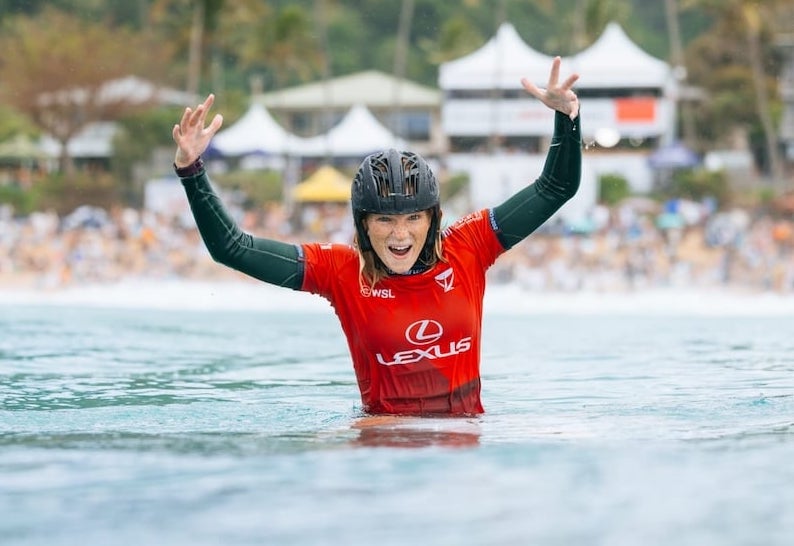
Taking advantage of the momentum caused by surfing in the Olympics, Oakley’s marketing team has strategically planned to release a first run of limited units through the company’s website in November at around $175.
Following recent trends, expect to see far more protected heads in the water by spring 2025, when the helmets will become available to the general public in unlimited quantities.














Comments
Comments are a Stab Premium feature. Gotta join to talk shop.
Already a member? Sign In
Want to join? Sign Up